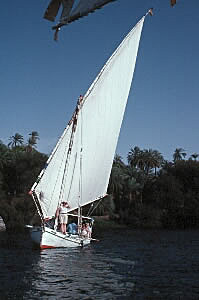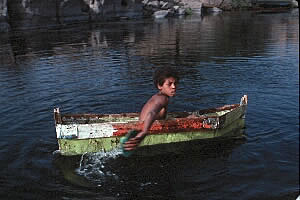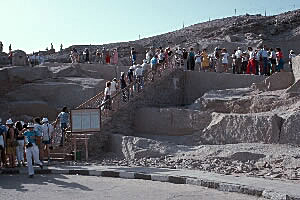 |
| The city of Aswan is built on the site of the city Abu and was named Elefantina, which means Elephant Island, by Greeks. It derived this name from the shapes of some of the rocks, like herds of elephants, on the island. It was the site of the 1st Nome of Upper Egypt and named Syene, referring to Syenite, the red granite stone that was used in for religious buildings and obelisk. Vast quarries surrounded the area and were still being used by the Romans. | ||||
| The Nile is beautiful here and we took the opportunity to sail around Elephantine Island and enjoy it's many beauties on a felluca, the Egyptian equivalent of the sail boat. Enjoy some pictures taken sailing around the island: |
 The elephant rock forms of Elephantine Island |
|||
 Elephantine Island and the Oberoi Hotel where we stayed |
||||
 Felluca sailing the Nile |
 Anne enjoying the ride |
|||
 Egyptian child wanting to race in a hand made boat |
||||
| One of the more interesting sights to see around Aswan, besides the dam and the Philae Temple, is an ancient quarry where they carved many of the obeliskthat adorned temples throughout Egypt. What was interesting and very important to archaeologist was the discovery of an obelisk being carved for Queen Hatshepsut that was almost completely finished when flaws in the stone were discovered and it was abandoned. The picture (right) shows the stairs leading up to this obelisks and people walking on top of it. You can't see it in the picture, but if the photo was taken from above looking down you would see a completely carved obelisks. It's only attachment being at the base to the ground. You can see where the Egyptian carvers drilled holes into the stone to see how bad the flaw was before abandoning the project. Archaeologists have learned much about the methods used by the Egyptians to carve such massive statues by studying the various drill marks left in the stone at these quarries and by this unfinished obelisk. |
 Unfinished obelisk at Aswan quarry |
|||
| Next stop ... the great Aswan Dam. | ||||